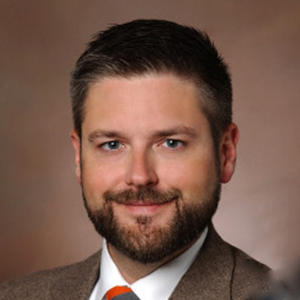The blood holds mysteries to healing that we’re only beginning to understand.
Franklin Wright, MD, associate professor of GI, trauma, and endocrine surgery in the University of Colorado Department of Surgery, is advancing what is known about blood – specifically, the balance between too much bleeding and too much clotting.
As a trauma surgeon, Wright ensures patients with traumatic injuries receive safe, effective transfusions. As a researcher, he is working to understand the role of three things: 1) calcium levels in blood; 2) antibiotic effectiveness during transfusions; and 3). the effect of altitude levels on clotting.
Challenging conventional knowledge of calcium in transfusion
Wright is part of a team of researchers funded by the Department of Defense to study blood calcium levels in traumatically injured patients.
“Calcium is an incredibly important element in our bloodstream,” says Wright. “It plays a role in how effectively our heart beats and how effectively our blood circulates. Low calcium levels can even impair heart function.”
Preservative agents are added to blood to stabilize it for transfusion. These agents are known to bind calcium. Wright says conventional thought is to expect a drop in blood calcium levels in patients receiving transfusion. However, new studies have emerged that show altered blood calcium levels in trauma patients before transfusion.
“It’s unusual and unexpected, and we don't understand why,” he says, speculating that it could be that cells release their contents when tissues are damaged. Or the drop in calcium may be a marker for severe injury.
His team is gathering data through a multi-site study focusing on calcium levels before and after transfusion.
Investigating antibiotic levels in the bloodstream during transfusion
Following traumatic injury, antibiotics are commonly given to patients. These patients may be receiving transfusions as they’re actively bleeding.
“We give antibiotics because the data says it's helpful, but we’re concerned that we may be under-treating trauma patients,” Wright says. “We need to have a better sense of the antibiotic levels within the bloodstream as patients are bleeding and receiving transfusions.”
His team will soon roll out a trial to measure antibiotic levels in the bloodstream during massive transfusions. The goal is to be able to tailor a better antibiotic regimen to reach therapeutic levels.
Improving data on high-altitude surgery and risk of blood clots
Blood clots, or deep vein thrombosis, are a risk in any surgery.
A data-sharing collaboration between three Colorado Front Range hospitals tracked surgical outcomes. When this data was compared to national data, they found higher than expected rates of blood clots.
All three hospitals have elevations around 5,000 feet. Wright and his team embarked on a literature review.
“There's very little data actually out there about this risk,” he says, adding that some small studies demonstrated a higher risk of clotting from orthopedic surgeries at high altitudes.
The team then launched a study analyzing data from millions of patients in the Trauma Quality Improvement Program (TQIP) database. The study looked at six years of data and found that the risk of blood clots went up for patients treated at centers located at more than 4,000 feet as compared to those treated at centers located at less than 1,000 feet.
“We have enough evidence to suggest this is a real issue,” he says. “Those of us who live and work at higher altitudes probably do have a higher risk.”
Now that they’ve determined there is a higher risk, they are looking to discover who is at the highest risk. The next steps ask: does it matter if you live at altitude and get injured? Is the risk the same for someone visiting from Texas who is injured?
“It's going to be a little more challenging to demonstrate, but our next line of study is trying to figure out the answers to these questions.”
Defining the scope of the problem
Wright says all three studies have the common goal of better understanding to improve trauma surgery outcomes.
“We don’t want to plan interventions until we really understand which trauma patients will benefit from them,” he says. “Once we’ve defined the problems, the next phase will be about determining which patients are at the highest risk and how we can decrease this risk.”



.png)

